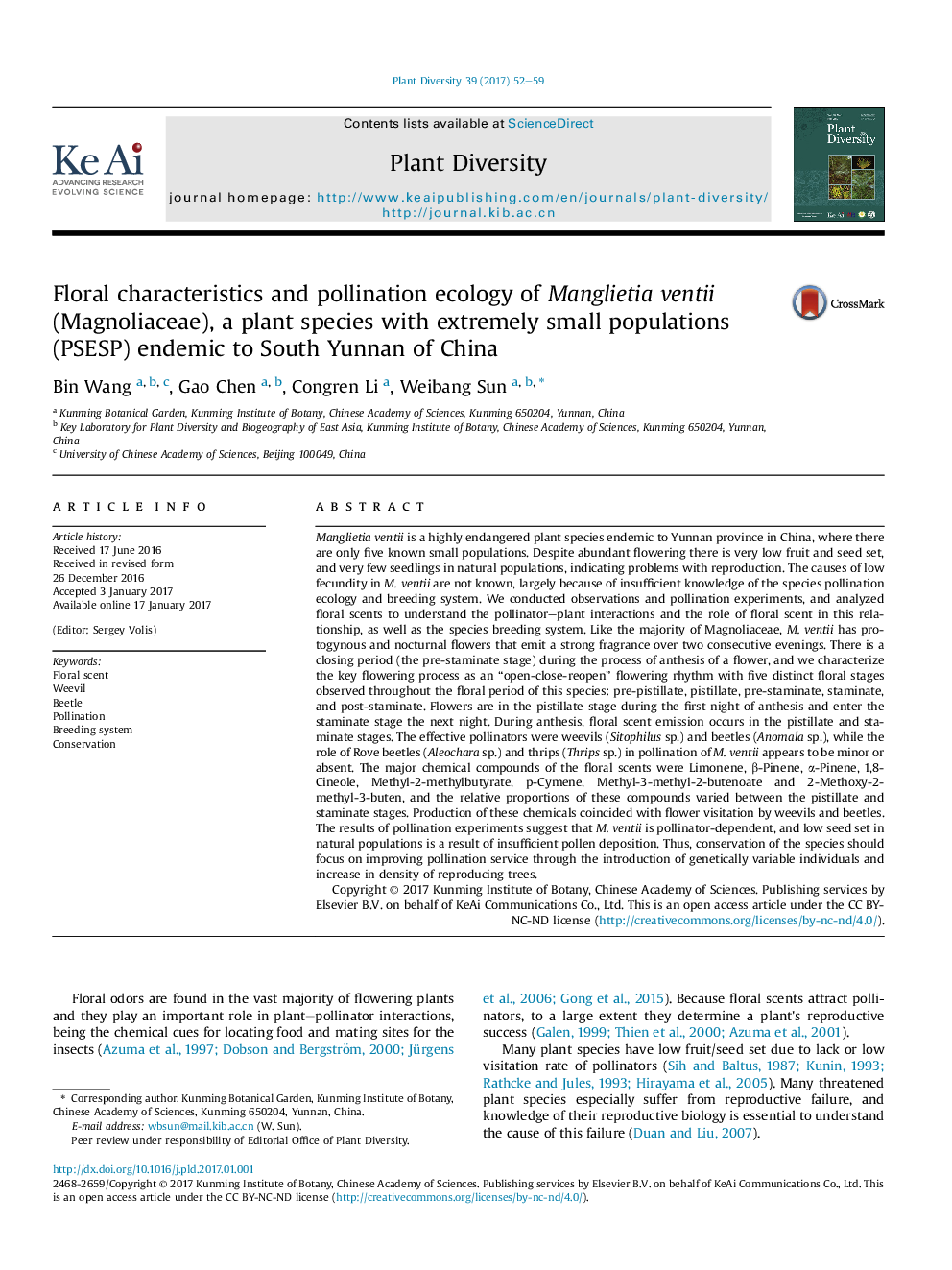| کد مقاله | کد نشریه | سال انتشار | مقاله انگلیسی | نسخه تمام متن |
|---|---|---|---|---|
| 5767121 | 1413188 | 2017 | 8 صفحه PDF | دانلود رایگان |

Manglietia ventii is a highly endangered plant species endemic to Yunnan province in China, where there are only five known small populations. Despite abundant flowering there is very low fruit and seed set, and very few seedlings in natural populations, indicating problems with reproduction. The causes of low fecundity in M. ventii are not known, largely because of insufficient knowledge of the species pollination ecology and breeding system. We conducted observations and pollination experiments, and analyzed floral scents to understand the pollinator-plant interactions and the role of floral scent in this relationship, as well as the species breeding system. Like the majority of Magnoliaceae, M. ventii has protogynous and nocturnal flowers that emit a strong fragrance over two consecutive evenings. There is a closing period (the pre-staminate stage) during the process of anthesis of a flower, and we characterize the key flowering process as an “open-close-reopen” flowering rhythm with five distinct floral stages observed throughout the floral period of this species: pre-pistillate, pistillate, pre-staminate, staminate, and post-staminate. Flowers are in the pistillate stage during the first night of anthesis and enter the staminate stage the next night. During anthesis, floral scent emission occurs in the pistillate and staminate stages. The effective pollinators were weevils (Sitophilus sp.) and beetles (Anomala sp.), while the role of Rove beetles (Aleochara sp.) and thrips (Thrips sp.) in pollination of M. ventii appears to be minor or absent. The major chemical compounds of the floral scents were Limonene, β-Pinene, α-Pinene, 1,8-Cineole, Methyl-2-methylbutyrate, p-Cymene, Methyl-3-methyl-2-butenoate and 2-Methoxy-2-methyl-3-buten, and the relative proportions of these compounds varied between the pistillate and staminate stages. Production of these chemicals coincided with flower visitation by weevils and beetles. The results of pollination experiments suggest that M. ventii is pollinator-dependent, and low seed set in natural populations is a result of insufficient pollen deposition. Thus, conservation of the species should focus on improving pollination service through the introduction of genetically variable individuals and increase in density of reproducing trees.
Journal: Plant Diversity - Volume 39, Issue 1, February 2017, Pages 52-59